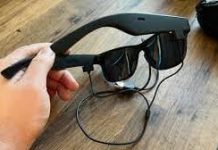Discover the history of Jupiter exploration, from Galileo’s early observations to modern space missions like Juno and Europa Clipper.
The History of Jupiter Exploration
Jupiter is the largest planet in our solar system and has been the subject of interest for astronomers and space enthusiasts for centuries. Exploration of Jupiter began in earnest in the 20th century with the advent of advanced technology, which allowed humans to send probes and spacecraft to the giant planet. The history of Jupiter’s exploration is a rich and fascinating one, and it has provided us with many new insights and discoveries about the gas giant and our solar system as a whole.
The first spacecraft to fly by Jupiter was NASA’s Pioneer 10, which was launched in 1972. This spacecraft was designed to study the environment of Jupiter and its four largest moons. It provided the first close-up images of the planet, and it discovered the intense radiation belt surrounding Jupiter. The Pioneer 10 also measured the magnetic field of Jupiter, which was found to be much stronger than previously believed.
In 1979, NASA launched the Voyager 1 and Voyager 2 spacecraft, which conducted a grand tour of the outer solar system. These spacecraft provided the first detailed images of Jupiter and its moons, and they made many important discoveries about the planet and its environment. The Voyager missions revealed that Jupiter has a complex atmosphere, with intense storms, winds, and atmospheric circulation patterns. They also discovered new moons, including the volcanic moon Io, and they provided the first evidence of a subsurface ocean on one of Jupiter’s moons, Europa.
In 1995, NASA launched the Galileo spacecraft, which was designed to study Jupiter and its moons in greater detail. Galileo conducted two close flybys of Europa, and it discovered evidence of a subsurface ocean and active ice volcanoes. Galileo also found that the atmosphere of Jupiter is even more complex than previously believed, with large convective storms, lightning, and clouds of ammonia.
In 2000, NASA launched the Cassini-Huygens spacecraft, which was designed to study Saturn and its moons. The spacecraft conducted a close flyby of Jupiter on its way to Saturn, and it provided new insights into the giant planet and its environment. Cassini-Huygens discovered new information about the magnetic field of Jupiter and its radiation belts, and it provided high-resolution images of the planet and its moons.
More recently, in 2016, NASA launched the Juno spacecraft, which is dedicated to studying Jupiter and its environment in detail. Juno has made many important discoveries since it arrived at Jupiter, including the discovery of new storms and vortices, the discovery of cyclones at the poles of Jupiter, and the measurement of the planet’s magnetic field and auroras. Juno is continuing to study Jupiter, and it is expected to make many new discoveries in the years to come.
In conclusion, the history of Jupiter exploration is a rich and fascinating one, and it has provided us with many new insights and discoveries about the gas giant and our solar system as a whole. From Pioneer 10 to Juno, spacecraft have provided us with a wealth of information about Jupiter and its environment, and they have helped us to better understand this important planet and its role in our solar system. The exploration of Jupiter will undoubtedly continue in the future, and it is sure to yield even more exciting discoveries and insights about this fascinating world.
The History of Jupiter Exploration: Facts
The exploration of Jupiter has been a fascinating journey that spans centuries, beginning with early telescopic observations and evolving into sophisticated space missions. Here’s a comprehensive overview:
Early Observations
- Galileo Galilei: The first detailed observations of Jupiter were made by Galileo Galilei in 1610 using a small, homemade telescope. He discovered the four largest moons of Jupiter, now known as the Galilean moons: Io, Europa, Ganymede, and Callisto1.
Pioneer Missions
- Pioneer 10 and 11: NASA’s Pioneer 10 was the first spacecraft to visit Jupiter, flying by in December 1973. It provided the first close-up images of the planet and its moons. Pioneer 11 followed in 1974, offering more detailed observations and discovering Jupiter’s magnetosphere.
Voyager Missions
- Voyager 1 and 2: Launched in 1977, these twin spacecraft conducted flybys of Jupiter in 1979. They provided detailed images of the planet, its rings, and moons. Notably, Voyager 1 discovered active volcanoes on Io, while Voyager 2 made close passes to the moons Europa and Io.
Galileo Mission
- Galileo Orbiter: Launched in 1989, Galileo was the first spacecraft to orbit Jupiter, arriving in 1995. It conducted extensive studies of the planet and its moons, including deploying a probe into Jupiter’s atmosphere. Galileo discovered evidence of subsurface oceans on Europa and Ganymede, and observed intense volcanic activity on Io.
Cassini and New Horizons
- Cassini: On its way to Saturn, the Cassini spacecraft took detailed photos of Jupiter in 2000, providing valuable data on its atmosphere.
- New Horizons: This spacecraft, en route to Pluto, conducted a flyby of Jupiter in 2007, capturing detailed images and data on the planet and its moons.
Juno Mission
- Juno: Launched in 2011, Juno has been orbiting Jupiter since 2016. Its mission is to study Jupiter’s composition, gravity field, magnetic field, and polar magnetosphere. Juno aims to understand the planet’s formation and evolution.
Future Missions
- Europa Clipper: Scheduled for launch in October 2024, this NASA mission will study Jupiter’s moon Europa, focusing on its potential to support life.
- JUICE (JUpiter ICy moons Explorer): Launched by the European Space Agency in 2023, JUICE will explore three of Jupiter’s largest moons: Ganymede, Callisto, and Europa.
In brief
- Discover the fascinating history of Jupiter exploration, from Galileo’s early observations to modern space missions like Juno and Europa Clipper.
- Explore the milestones in Jupiter exploration, including the Pioneer, Voyager, and Galileo missions, and their groundbreaking discoveries.
- Learn about the spacecraft that have visited Jupiter, their missions, and the incredible data they’ve gathered about the gas giant and its moons.
- Understand the evolution of Jupiter exploration, from the first close-up images by Pioneer 10 to the ongoing studies by NASA’s Juno spacecraft.
- Dive into the future of Jupiter exploration with upcoming missions like Europa Clipper and ESA’s JUICE, aiming to uncover the secrets of Jupiter’s moons.
The History of Jupiter Exploration: FAQs
- What was the first spacecraft to visit Jupiter?
- Pioneer 10 was the first spacecraft to visit Jupiter, making its flyby in December 1973.
- What are the Galilean moons?
- The Galilean moons are the four largest moons of Jupiter: Io, Europa, Ganymede, and Callisto. They were discovered by Galileo Galilei in 1610.
- What significant discoveries did the Voyager missions make about Jupiter?
- The Voyager missions discovered active volcanoes on Io, detailed the structure of Jupiter’s rings, and provided close-up images of the moons Europa and Io.
- What is the main goal of the Juno mission?
- The Juno mission aims to study Jupiter’s composition, gravity field, magnetic field, and polar magnetosphere to understand the planet’s formation and evolution.
- What future missions are planned for Jupiter exploration?
- Upcoming missions include NASA’s Europa Clipper, set to launch in October 2024, and the European Space Agency’s JUICE (Jupiter Icy Moons Explorer), which launched in 2023.
- What did the Galileo mission discover about Jupiter’s moons?
- The Galileo mission found evidence of subsurface oceans on Europa and Ganymede and observed intense volcanic activity on Io.
- How did the New Horizons mission contribute to our understanding of Jupiter?
- During its flyby in 2007, New Horizons captured detailed images and data on Jupiter and its moons, contributing valuable information to our understanding of the planet.
- Why is Europa considered a key target for exploration?
- Europa is believed to have a subsurface ocean beneath its icy crust, making it a prime candidate for the search for extraterrestrial life.
- What role did the Cassini spacecraft play in Jupiter exploration?
- On its way to Saturn, Cassini took detailed photos of Jupiter in 2000, providing valuable data on its atmosphere.
- What are some of the challenges of exploring Jupiter?
- Challenges include the planet’s intense radiation belts, strong magnetic field, and the vast distance from Earth, which makes communication and navigation difficult. 0 0 0
N.B. The article ‘The History of Jupiter Exploration’ originally belongs to the book ‘Essays on Science And Technology‘ by Menonim Menonimus.
Books of Composition by M. Menonimus:
- Advertisement Writing
- Amplification Writing
- Note Making
- Paragraph Writing
- Notice Writing
- Passage Comprehension
- The Art of Poster Writing
- The Art of Letter Writing
- Report Writing
- Story Writing
- Substance Writing
- School Essays Part-I
- School Essays Part-II
- School English Grammar Part-I
- School English Grammar Part-II..
Related Search:
- Jupiter-NASA Solar System Exploration
- A History of Jupiter Exploration
- Mars Exploration
- The History of Mars Exploration
- Artificial Intelligence Essay











